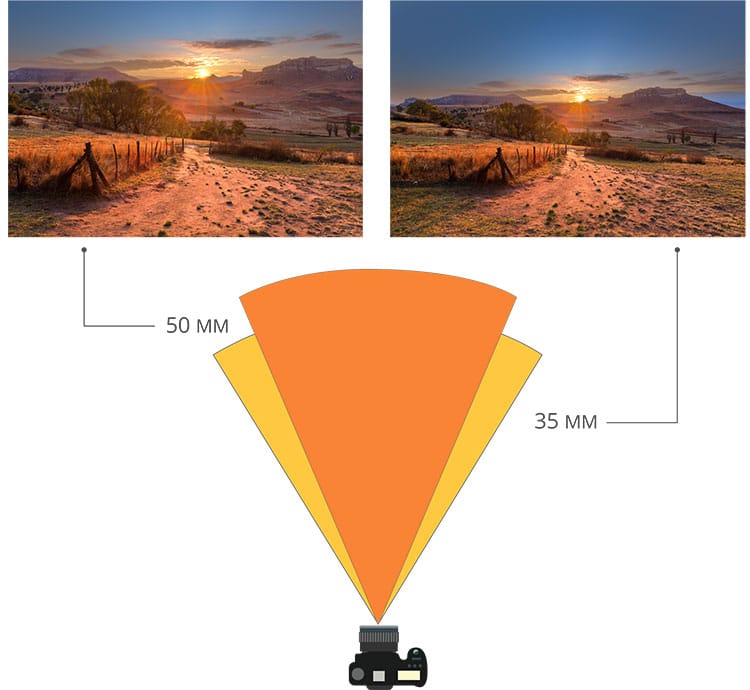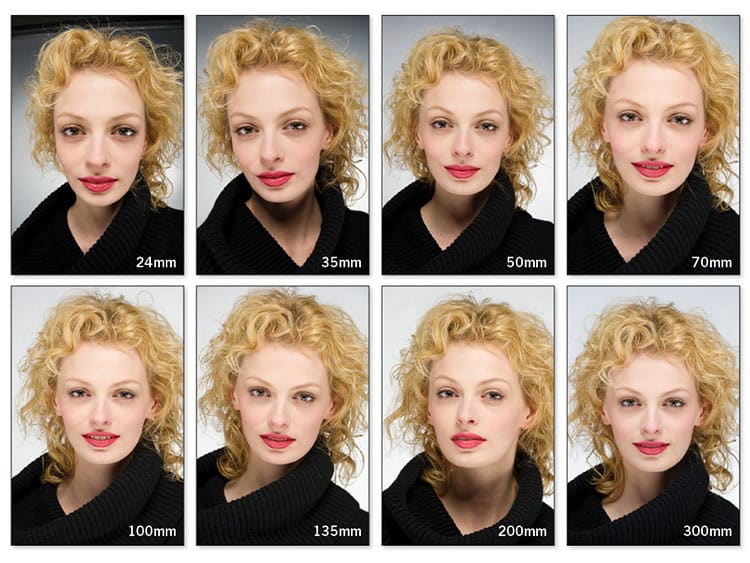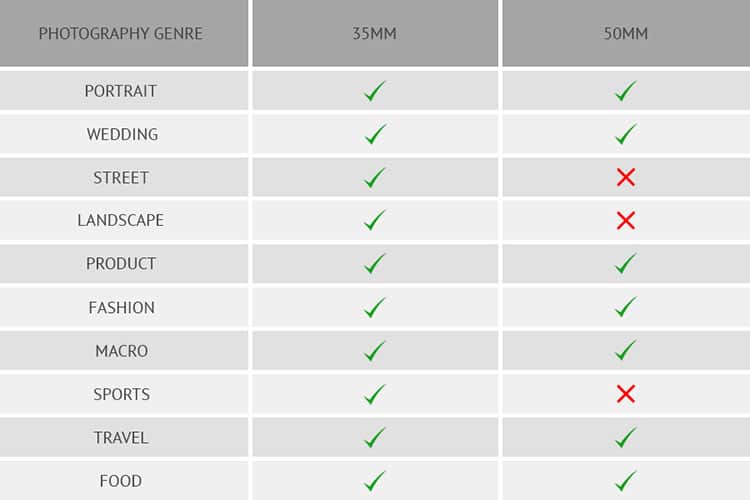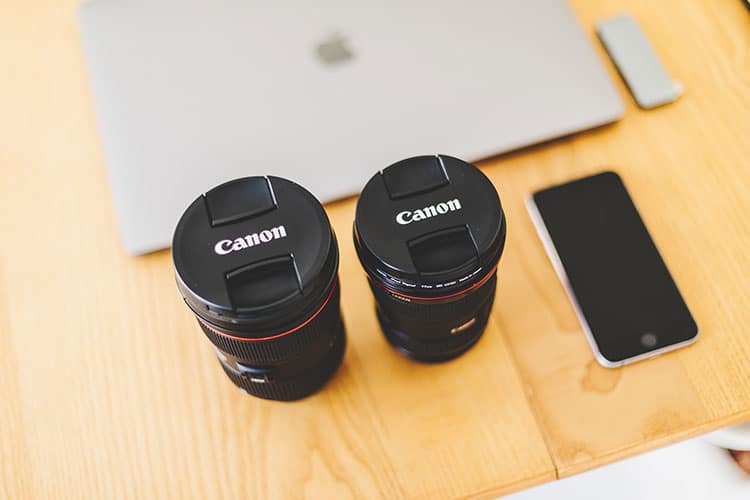Chances are, you have seen a camera lens described with different millimeter measurements. There are a wide variety of options, and some cameras can switch between different lens lengths. Sometimes, it’s a bit confusing trying to pick out the perfect lens; they can be expensive, and you may not be entirely sure which one is right for you.
Many people believe that there is one lens that is better than the others, but is this true? Each lens offers different effects, suited for different situations in photography. In this article, we are going to try and see if there is actually a superior choice when looking at 35mm and 50mm camera lenses.
What do these measurements actually mean though? Before we talk about which lens is better, first we have to know what they actually do. It’s great to know which one is superior, but it’s even better to know why. This will help you pick the lens that is right for you without having any doubts.
The last thing we want is for you to spend hundreds of dollars on a lens only to realize, you don’t really like it because it doesn’t suit your style of photography. Keep reading below to learn about different camera lenses.
Contents
What Do the Millimeter Measurements Mean?
The diagram below shows the difference between 35mm and 50mm lenses

The millimeter measurement is simply just the length of the lens itself. When the lens length is changed, this changes what your image will look like. For example, a 35mm lens will create a picture different from one taken in the same spot with a 50mm lens.
The length of the lens determines the width of your photographs, but they are inverse to each other. By this, I mean that a longer lens creates a narrower image and a shorter lens creates a wider image. The field of vision for a 50mm lens is 46 degrees, while the field of vision for a 35mm lens is 63 degrees.
Our field of vision is actually quite large. You are reading this right now, focusing on one point, but your field of vision is almost everything in front of you. When both eyes are combined, our field of vision is about 120 degrees. Of course, we don’t see all of that at the same time, but we see a lot of it, so our eyes are essentially a high quality, short lens camera.
On the other end of the measurement spectrum is fish eye lenses. These are typically 4mm, with a very wide field of vision. This also causes the image to appear distorted. Fish eye lenses are given this name because of the immense amount of distortion that they have. They definitely aren’t great for a wide use of photography, but many photographers love to use them for city/landscapes where there aren’t many people.
Most wide-angle lenses are around 10-30mm, with fish eye lenses being right below the minimum and our 35mm lens being right above the maximum. The smallest lens you can buy is 4mm, but the lens can be extremely long as well, with many passing 1000mm.

If you need a little visual to go along with this information, here is the same picture taken with 8 different lenses. There are obvious ones that look better, but for now just notice that even though the lens is just getting longer, it changes how the picture looks. A few millimeters of change in angle can alter the picture, so the length is definitely important.
Now, we know all about how these lenses work and what the difference is, but when should you use a 35mm lens compared to a 50mm lens? Let’s find out!
Which One is Better?

In general, it is better to use a wide, short lens for closer images and a narrower, longer lens if there is a greater distance. This is easy to understand with fisheye lenses. If you have ever seen photography taken with this type of lens, you know it’s close to the subject. The photograph won’t look as good if there is a greater distance between the lens and the subject.
All of this is to say, that 35mm lenses are wider than the 50mm lens. I know, this was a lot of information just to get to that, but everything mentioned above was still important! Photographers should know the difference between lenses. Length is the only physical difference, but like I mentioned above, the length can alter the photograph.
Look at the chart above. The left column shows the most common types of photography that you will encounter. As you can see, 35mm lenses can be used for all of them, however, 50mm camera lens aren’t really suited for them all.
A chart has great and concise information, but let’s talk about each lens individually so we can see the benefits of using each one.
35mm Lens

Like I mentioned above, this is a great, versatile lens. It is on the smaller end of a wide-angle lens, so there will not be any noticeable distortion in your photography. Since it can capture at these wide angles, many photographers use this for landscapes, streets, and weddings. Chances are, most wedding photography you see is taken with a 35mm lens.
Because this lens is great for close ups and wide frames, you should definitely use this lens for group photography! The wide frame can capture all of the people you have without causing any distortion.
Take a look at the pictures above. This is travel/street photography. Which one looks better? It should be the one shot with a 35mm lens. The person in the photo looks a bit larger, however, you can see more of the street behind him. The picture taken with a 50mm lens has the person a little smaller, but the buildings are closer and you can’t see all of them. For photography like this, it is important that you see the entire background so a 35mm lens would be better here.
We should also talk about possible cons when using this lens too. In general, long lenses have a lot of compression, which means that sometimes the background can appear closer than it actually is. A 35mm lens has no compression, so if you want a photograph that compresses the background, you may want to opt for the 50mm lens.
50mm Lens
A 50mm lens is classic. Don’t think that just because the chart above seems to favor the 35mm lens, that means you should just never use this one! Since this is a classic lens, photographers throughout time have been using it to take breathtaking pictures.
Although both lenses work great for portraits, photographers tend to favor this lens. For portraits, you don’t really need a wide-angle because the only focus should be the person.
Look at the portraits above. Just like we did for the 35mm lens in the previous section, ask yourself which one is better. The photographs taken with 50mm and 85mm lenses should stand out more than the one taken with a 35mm lens. For portrait photography, you don’t really need the background. The picture taken with a 35mm lens shows the distant background which is not as important as the subject. The longer lenses focus more clearly on her, with less emphasis on the background of the picture.
Like the 35mm though, there are also some cons. This isn’t the best lens for photography in small spaces. Sometimes, there is only so much you can back up to capture a frame before you hit the wall. We have all tried to take a picture of something, only to realize it definitely doesn’t fit in the frame. Instead of backing yourself into a corner, try using a 35mm lens in this situation.
Final Thoughts
Finally, after all of this information, we can answer the question; which lens is better? The answer ultimately comes to your own personal decision.
Overall, the 35mm lens seems like a better choice, because of the range of uses and wide-angle it gives without distorting the picture. Many photographers online swear by their 35mm lens and shoot a majority of their photographs with it. It is definitely a popular choice and unless you only want to do portrait photography, it is a great option.
When in doubt, just stick to the general rule of thumb; short lens for closer images and longer lens if there is a greater distance. This should help you in most situations if you are unsure which lens is best. Keep in mind, there are more options than just 35mm and 50mm. Earlier, we saw an example of an 85mm lens. Feel free to experiment with different lens lengths at varying distances.
Don’t forget, you don’t have to settle with just one of these lenses! Try out both and see which one you personally like better.

Very informative, learnt more about the lens effect in simple way.